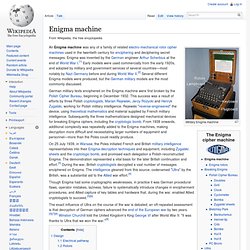

The Evolution of the Rifle: From Muskets to the Assault Rifle. Sword Cutlass. KSC Beretta 92 Black Lagoon "Sword Cutlass" Limited Edition Model based on Beretta 92 GBB As seen in the Anime "Black Lagoon" This is what it's like to be shot at with an AK-47. The World's Most Unusual Weapons - MyWiki. Johan Adolph Grecke: Pair of flintlock pistols of Empress Catherine the Great (1986.265.1,2. Video. Video. Wilson-combat-tactical-supergrade-4.jpg (JPEG Image, 900 × 600 pixels) Ready Holster & Tactical Supply.
If you’re into guns, chances are that you’re also in to rare guns.

That’s exactly what this infographic below hits on. Guns can be considered rare for all sorts of reasons and most of us gun enthusiasts have a mental checklist of the rare guns we have had the chance to fire. Let us know if you’ve ever gotten a look at, or fired any of the guns in our list below. We’d love to hear about your experience in the comments, and also any guns you think should be added to the list in the future. Click Image to Enlarge>> Click Image to Enlarge>> To put this graphic on your web site, just highlight, and copy and paste the HTML code below: This entry was posted in Guns, Infographics and tagged .44 Auto Mag Pistol, AN-94, Calico M950, China Lake Grenade Launcher, HK Caws, HK G11, Materba 6 Unica Autorevolver, Pancor Jackhammer, Rare Guns, Walther WA 2000, XM25, XM29. I Have Never Wanted Anything So Bad in My Entire Life. Enigma machine. Military Enigma machine An Enigma machine was any of a family of related electro-mechanical rotor cipher machines used in the twentieth century for enciphering and deciphering secret messages.

Enigma was invented by the German engineer Arthur Scherbius at the end of World War I.[1] Early models were used commercially from the early 1920s, and adopted by military and government services of several countries—most notably by Nazi Germany before and during World War II.[2] Several different Enigma models were produced, but the German military models are the most commonly discussed. Though Enigma had some cryptographic weaknesses, in practice it was German procedural flaws, operator mistakes, laziness, failure to systematically introduce changes in encipherment procedures, and Allied capture of key tables and hardware that, during the war, enabled Allied cryptologists to succeed. Design[edit] Enigma in use, 1943 Electrical pathway[edit] Rotors[edit] Enigma rotor assembly. Stepping[edit] Cartridge of the Month. Battle of the Philippine Sea - War Battles - World War 2 Battles.
The Battle of the Philippine Sea was the last occasion on which the Japanese Navy was able to challenge the US Pacific Fleet on equal terms.

After the battle, the Japanese Navy had so few pilots and aircraft left that its aircraft carriers were virtually useless. Admiral Toyoda's plan was to trap the US carrier force between Vice-Admiral Ozawa's carrier force planes and land-based aircraft from Guam in Operation A-Go. The Japanese force consisted of the Mobile Force which was divided into Force A with Ozawa's three carriers the Taiho, Shokaku, and Zuikaku (which had 207 aircraft), Force B with another three carriers the Junyo, Hiyo, and Ryuho (which had 135 aircraft) and a Van Force of Vice-Admiral Kurita's battleships. Vice-Admiral Spruance's 5th Fleet assembled off the Marianas to protect the invasion force. Krummlauf - Guns - War Weapons. This German device consisted of a curved barrel attachment fitted to the MP-43 assault rifle which allowed it to shoot round corners.

The device was requested in order to permit riflemen to shoot from cover without exposing themselves and also to allow the crew of a tank to fire downwards, close to the tank side, to prevent enemy infantry coming close enough to attach explosive charges to the tank Development was undertaken by the C. G. Haenel Company, and after extensive trials it was found that a simple extension would turn the bullet through 30 degrees, and deliver it accurately to the target up to a range of about 850m. The idea was first applied to the standard Gewehr 98 service rifle, it was then tried with the MG 34 machine gun, but since the deflection altered the recoil forces the machine gun would not fire at automatic. Afghanistan. Heckler & Koch HK4. The HK 4 pocket pistol was first introduced by Heckler & Koch in 1967 making it the first pistol produced by the company.

Mass production of this pistol started in 1968 and continued until 1984. There were approximately thirty-eight thousand pistols produced during this time. Serial numbers 10001 to 36550 were for commercial distribution. Twelve thousand pistols were produced for the German police and other government agencies in the .32 ACP (7.65x17mm Browning SR) caliber with the designation P11 and were serial numbered 40001 to 52400. It is thought that the basic design of the HK 4 is based on that of the Mauser HSc. P7.